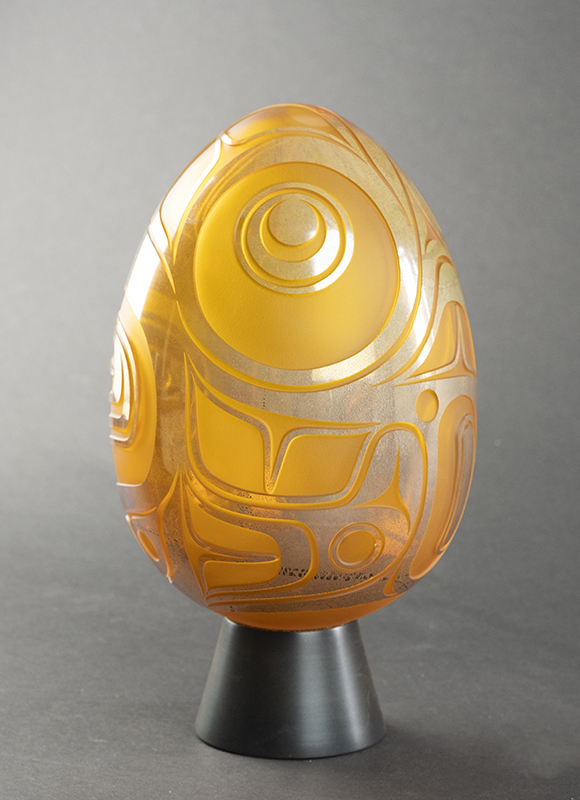-
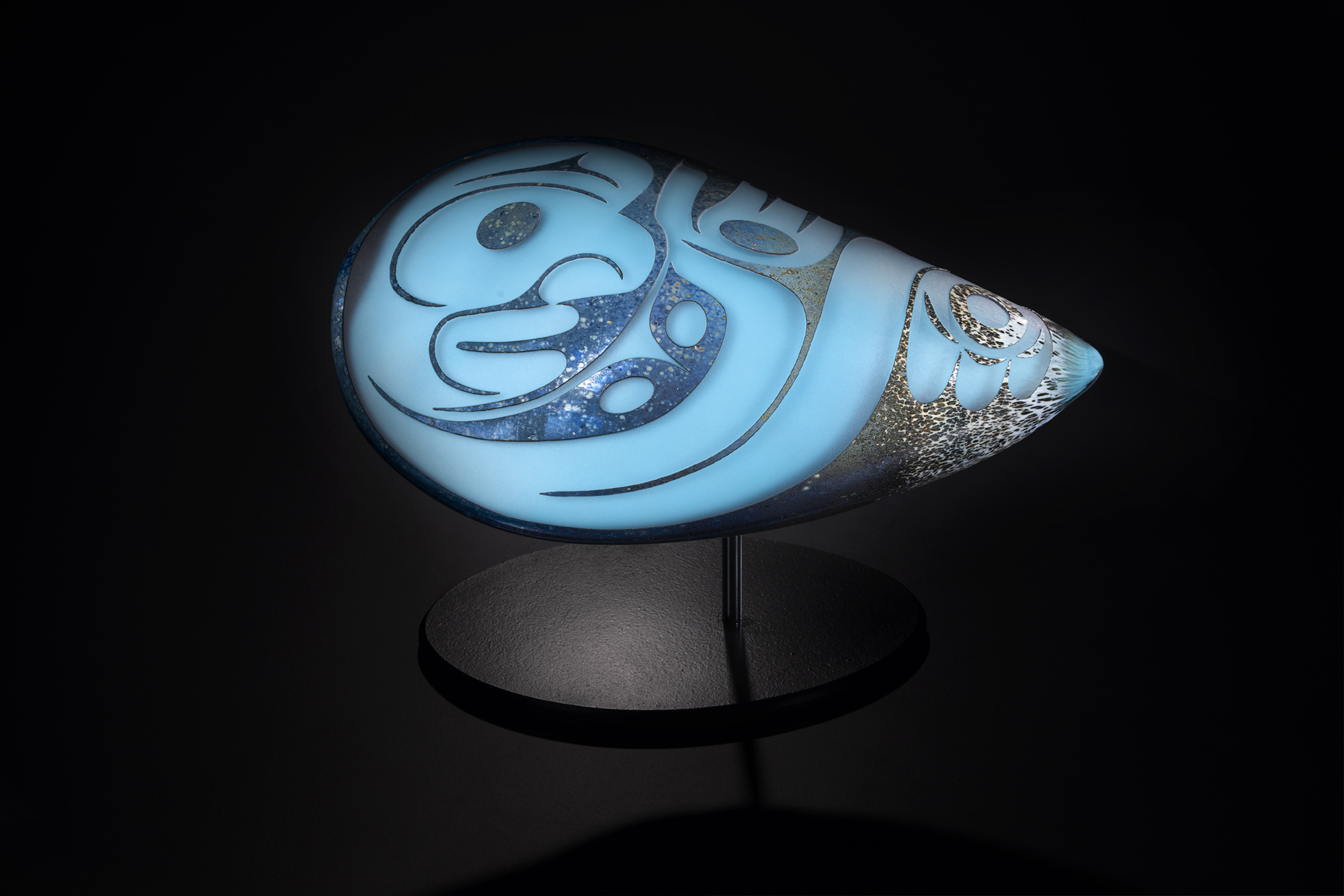 Entuk (A Collaboration with Raven Skyriver and Preston Singletary)Freehand Sculpted and Sandblasted Glass
Entuk (A Collaboration with Raven Skyriver and Preston Singletary)Freehand Sculpted and Sandblasted Glass- 9"h
- 15"w
- 8"d
SOLD -
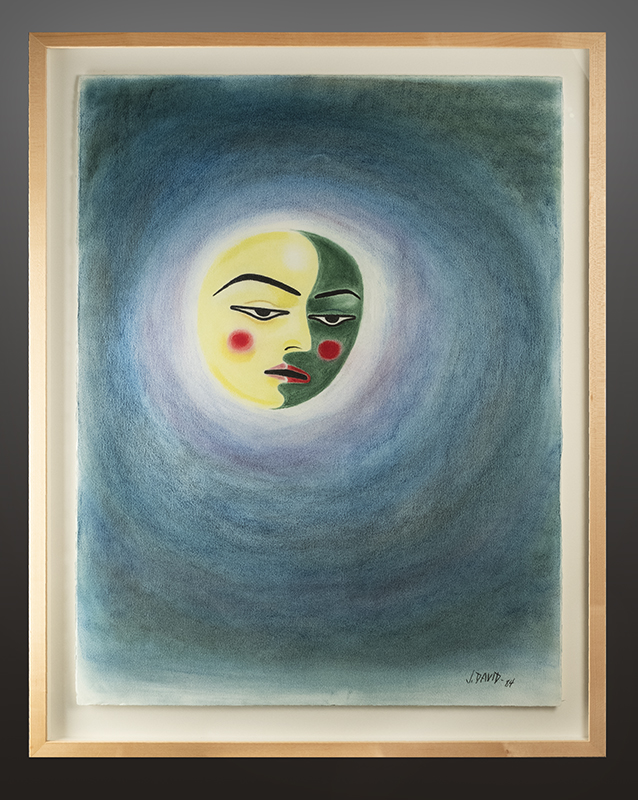 Untitled (Moon)Pastel on Paper, Conservation Framed
Untitled (Moon)Pastel on Paper, Conservation Framed- 34.5"h
- 26.5"w
SOLD -
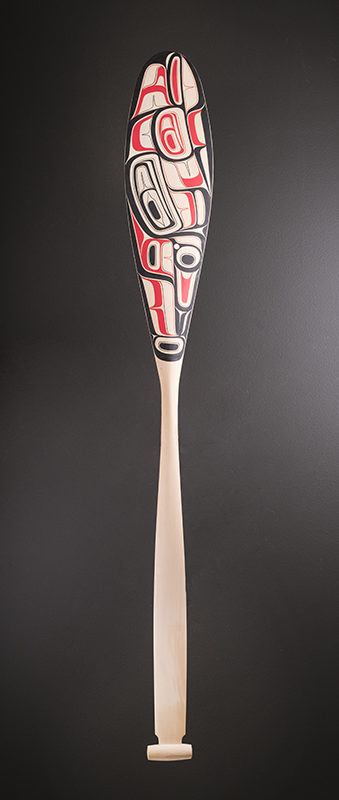 Salmon River Run PaddleYellow Cedar, Acrylic Paint
Salmon River Run PaddleYellow Cedar, Acrylic Paint- 56"h
- 7"w
- 1.5"d
SOLD -
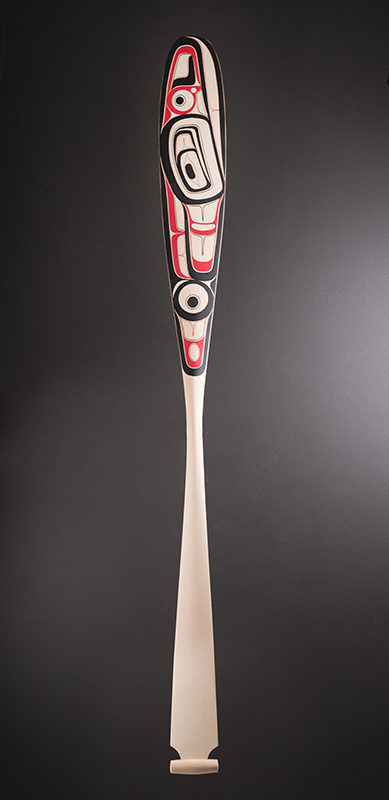 Humpback Whale – PaddleYellow Cedar, Acrylic Paint
Humpback Whale – PaddleYellow Cedar, Acrylic Paint- 61.5"h
- 5.63"w
- 1.38"d
SOLD -
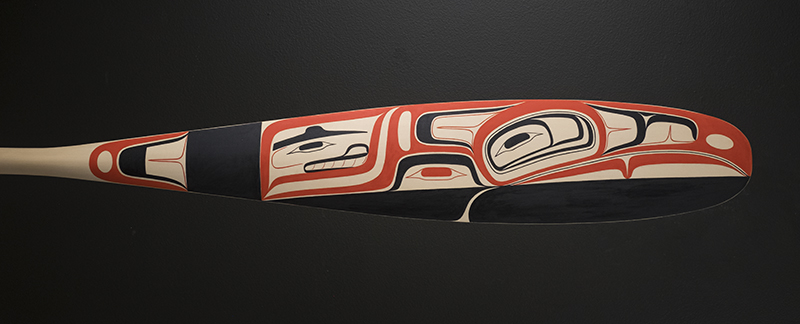 Sea Eagle PaddleYellow Cedar, Acrylic
Sea Eagle PaddleYellow Cedar, Acrylic- 62"h
- 5.75"w
- 1"d
SOLD -
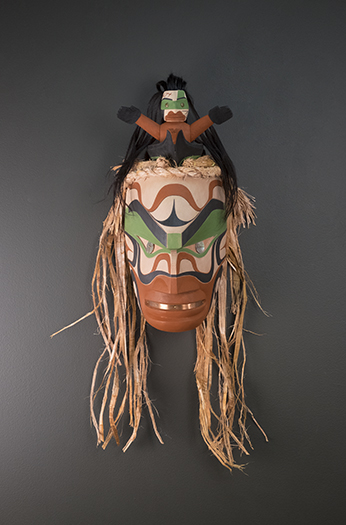 Ka-nowish’s Epic Journey
Ka-nowish’s Epic Journey- 29"h
- 13"w
- 10"d
SOLD -
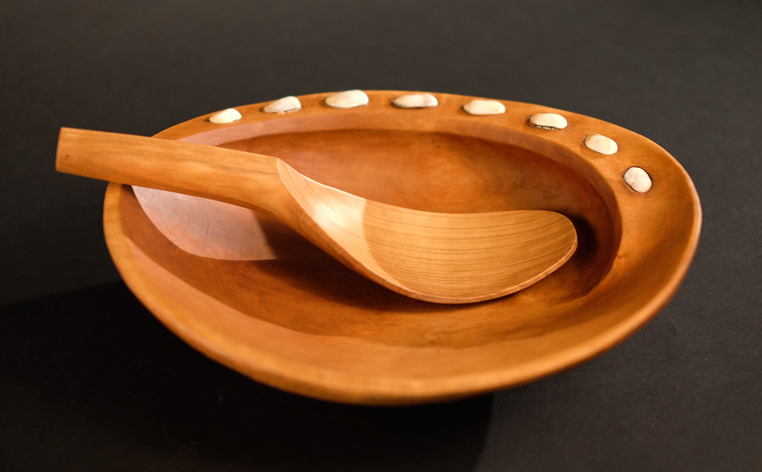 Abalone Shell BowlRed Alder, Yew, Opercula
Abalone Shell BowlRed Alder, Yew, Opercula- 2.88"h
- 11.38"w
- 10.5"d
SOLD -
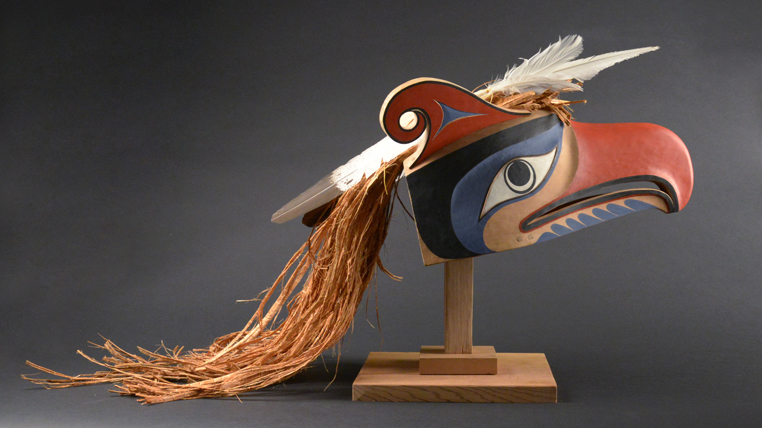 Thunderbird (Deetskin) HeaddressRed Cedar, Red Cedar Bark, Craft Feathers, Hand-Mixed Acrylic & Dry Pigments
Thunderbird (Deetskin) HeaddressRed Cedar, Red Cedar Bark, Craft Feathers, Hand-Mixed Acrylic & Dry Pigments- 18"h
- 14.5"w
- 8.5"d
SOLD -
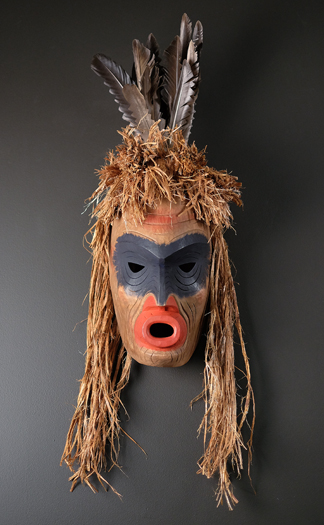 Ulthma-kooke – Wildman MaskRed Cedar, Cedar Bark, Pigments, Beach-Found Feathers
Ulthma-kooke – Wildman MaskRed Cedar, Cedar Bark, Pigments, Beach-Found Feathers- 37"h
- 11"w
- 8"d
SOLD -
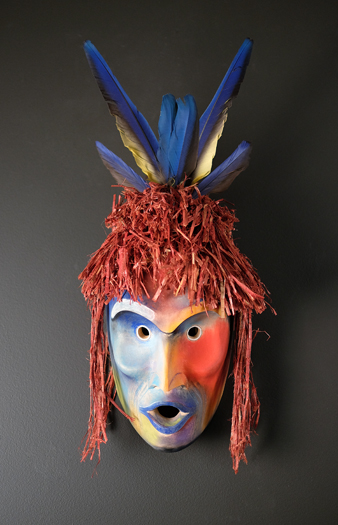 Wildman of the Universe MaskRed Cedar, Pigments, Dyed Cedar Bark, Parrot Feathers
Wildman of the Universe MaskRed Cedar, Pigments, Dyed Cedar Bark, Parrot Feathers- 24"h
- 10"w
- 9"d
SOLD -
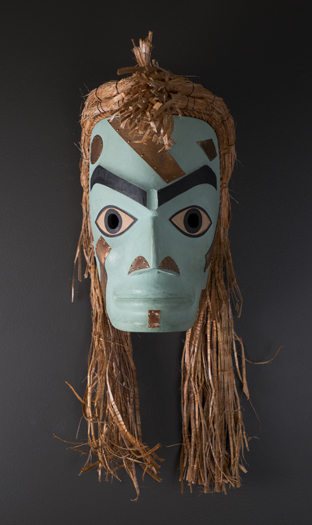 Copper Chief MaskRed Cedar,Cedar Bark, Oxidized Copper Powder, Hammered Copper
Copper Chief MaskRed Cedar,Cedar Bark, Oxidized Copper Powder, Hammered Copper- 26"h
- 12"w
- 12"d
SOLD -
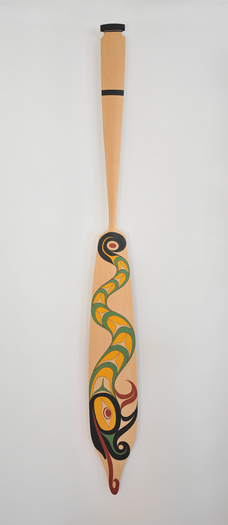 Serpent Steering PaddleYellow Cedar, Acrylic
Serpent Steering PaddleYellow Cedar, Acrylic- 96"h
- 9.25"w
- 1"d
SOLD -
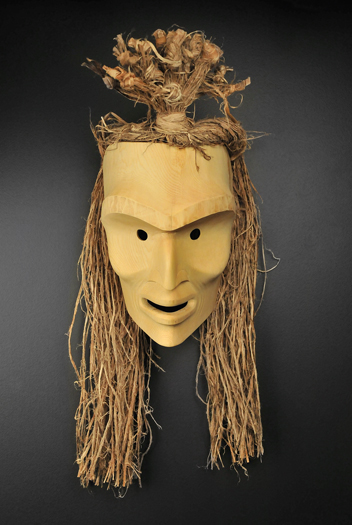 Yellow Cedar ManYellow Cedar, Yellow Cedar Bark
Yellow Cedar ManYellow Cedar, Yellow Cedar Bark- 15"h
- 12"w
- 12"d
SOLD -
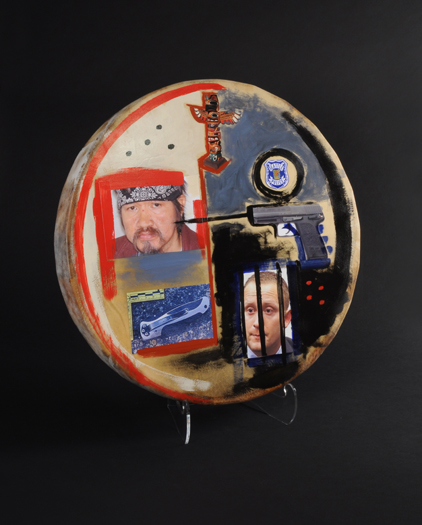 The Silenced DrumDeer Hide, Acrylic
The Silenced DrumDeer Hide, Acrylic- 22"h
- 22"w
SOLD -
 T-tloopDeer Hide, Acrylic
T-tloopDeer Hide, Acrylic- 24"h
- 24"w
SOLD -
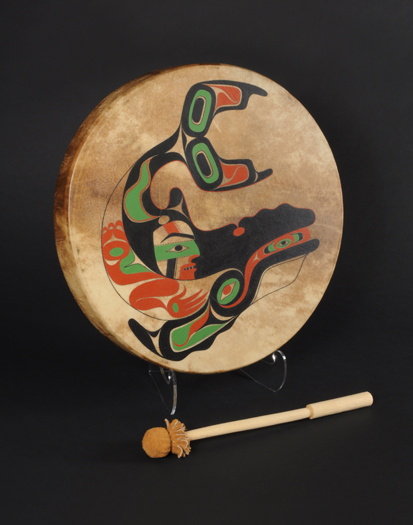 SuccessElk Hide, Acrylic
SuccessElk Hide, Acrylic- 20"h
- 20"w
SOLD -
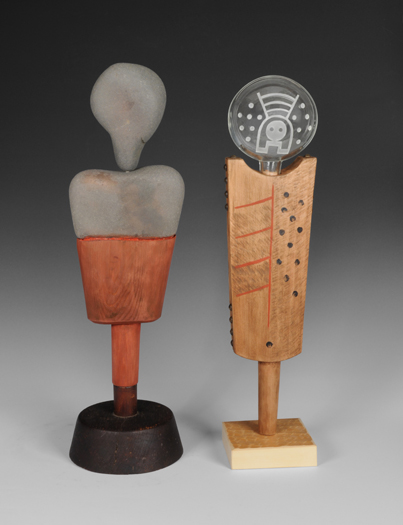 Grandfather (Stone)Mixed MediaSOLD
Grandfather (Stone)Mixed MediaSOLD -
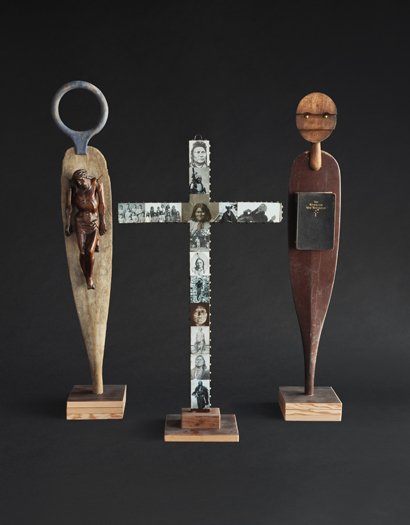 An American TrilogyMixed MediaSOLD
An American TrilogyMixed MediaSOLD -
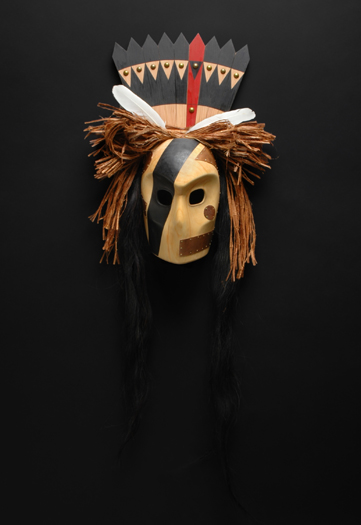 SundanceAlder, Cedar, Paint, Cedar Bark, Horse Hair, Goose Feathers, Brass Tacks
SundanceAlder, Cedar, Paint, Cedar Bark, Horse Hair, Goose Feathers, Brass Tacks- 40"h
- 16"w
- 6"d
SOLD -
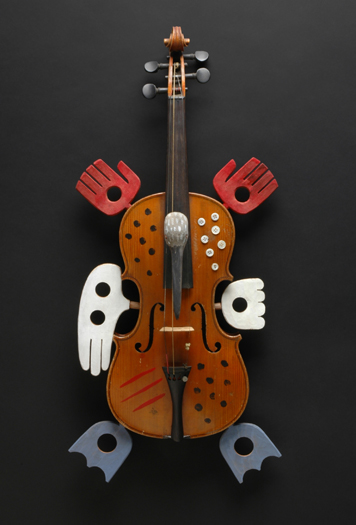 The ViolinMixed Media on Violin
The ViolinMixed Media on Violin- 26"h
- 12.25"w
- 6"d
SOLD -
 Power BundlePastel on Paper
Power BundlePastel on Paper- 40"h
- 26"w
SOLD -
 Coot Rattle– Duck of LoveYellow Cedar, Acrylic, Glass Beads, Brass, Metal Stand
Coot Rattle– Duck of LoveYellow Cedar, Acrylic, Glass Beads, Brass, Metal Stand- 4"h
- 8.75"w
- 3"d
SOLD -
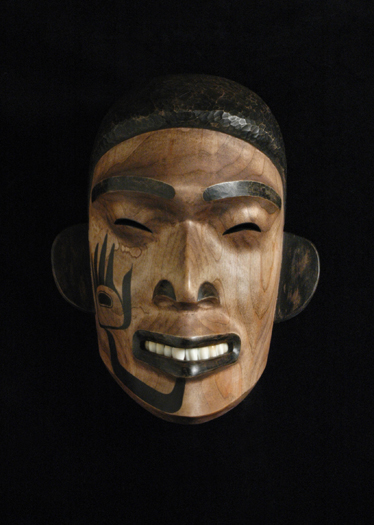 Obama for ChangeAlder, Opercula, Pigments
Obama for ChangeAlder, Opercula, Pigments- 11"h
- 9.5"w
- 4.75"d
SOLD -
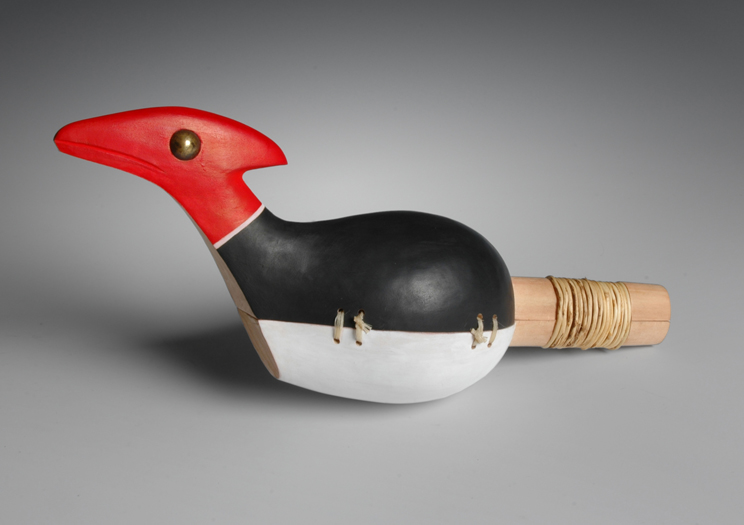 Pileated Woodpecker RattleAlder, Acrylic, Elk Sinew, Root, Brass
Pileated Woodpecker RattleAlder, Acrylic, Elk Sinew, Root, Brass- 4.5"h
- 10.75"w
- 3"d
SOLD -
 Abalone BowlAlder, Abalone
Abalone BowlAlder, Abalone- 2.5"h
- 9.5"w
- 5.75"d
SOLD -
 Spirit Figure #14Mixed Media
Spirit Figure #14Mixed Media- 13.5"h
- 3"w
- 1.38"d
SOLD -
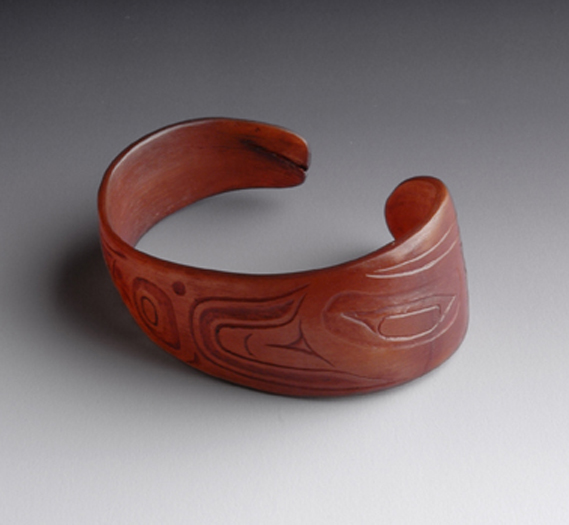 Gray Whale BraceletMountain Sheep HornSOLD
Gray Whale BraceletMountain Sheep HornSOLD -
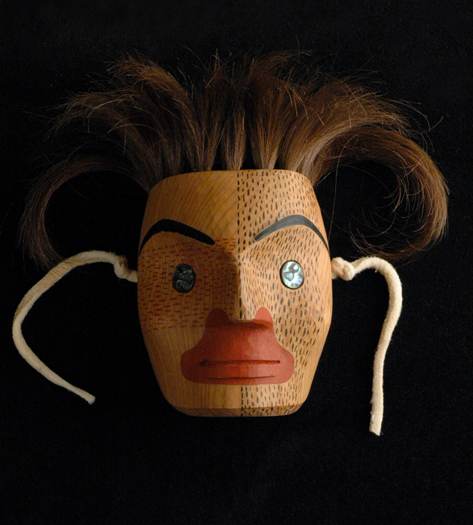 Rain in the FaceYew Wood, Acrylic, Abalone, Human Hair
Rain in the FaceYew Wood, Acrylic, Abalone, Human Hair- 4"h
- 3"w
- 2.5"d
SOLD -
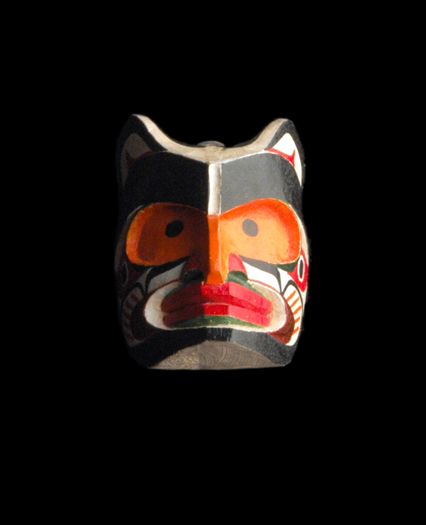 Bukwus PendantAlder, AcrylicSOLD
Bukwus PendantAlder, AcrylicSOLD -
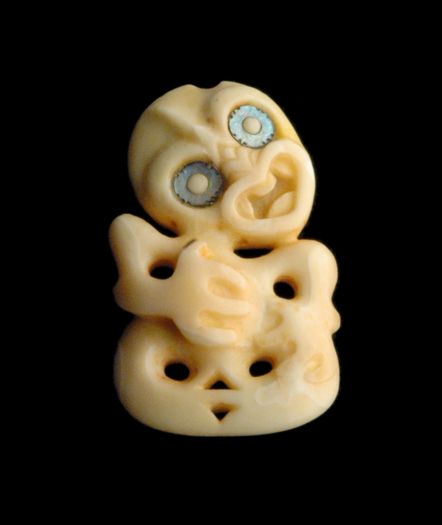 Tiki PendantIvory, PauaSOLD
Tiki PendantIvory, PauaSOLD -
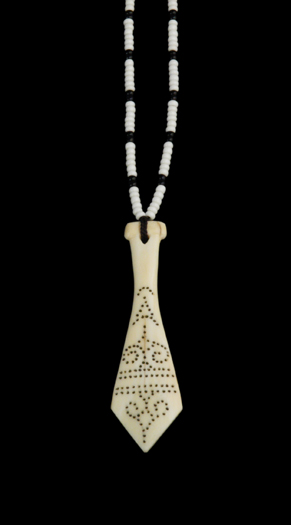 Mammoth Ivory Scrimshaw Paddle NecklaceBark of Woolly Mammoth TuskSOLD
Mammoth Ivory Scrimshaw Paddle NecklaceBark of Woolly Mammoth TuskSOLD -
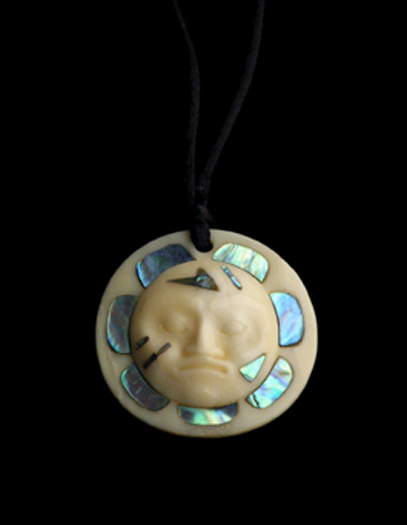 Sun PendantWalrus Ivory, AbaloneSOLD
Sun PendantWalrus Ivory, AbaloneSOLD -
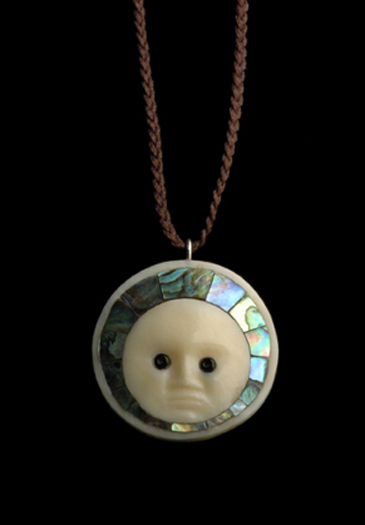 Moon PendantWalrus Ivory, Abalone, BeadsSOLD
Moon PendantWalrus Ivory, Abalone, BeadsSOLD -
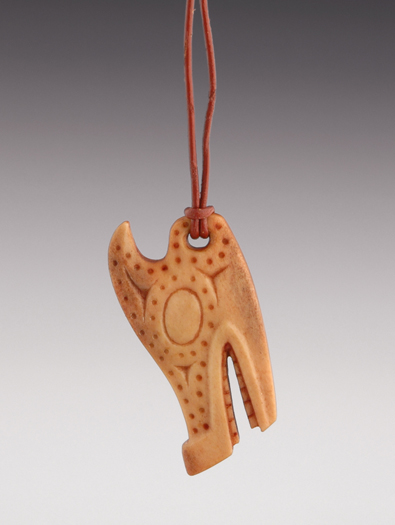 Wolf PendantElk HornSOLD
Wolf PendantElk HornSOLD -
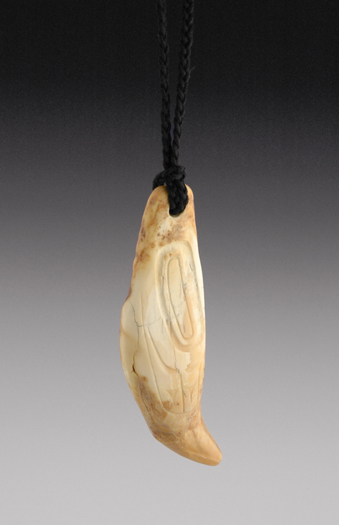 Bird Wing PendantCave Bear ToothSOLD
Bird Wing PendantCave Bear ToothSOLD -
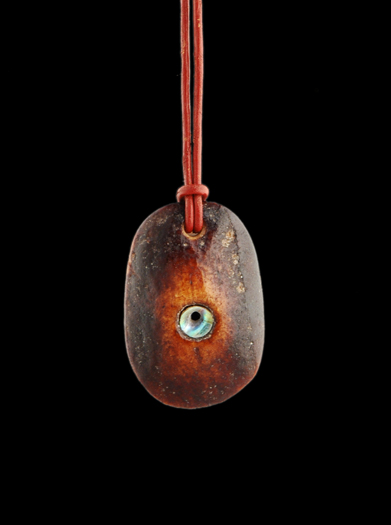 Navel of the Earth PendantWalrus IvorySOLD
Navel of the Earth PendantWalrus IvorySOLD -
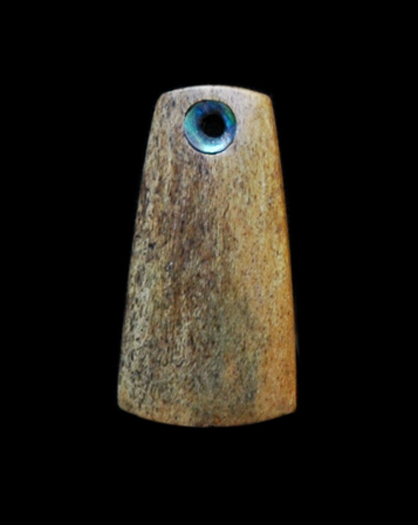 Adze Blade PendantOld Whalebone, AbaloneSOLD
Adze Blade PendantOld Whalebone, AbaloneSOLD -
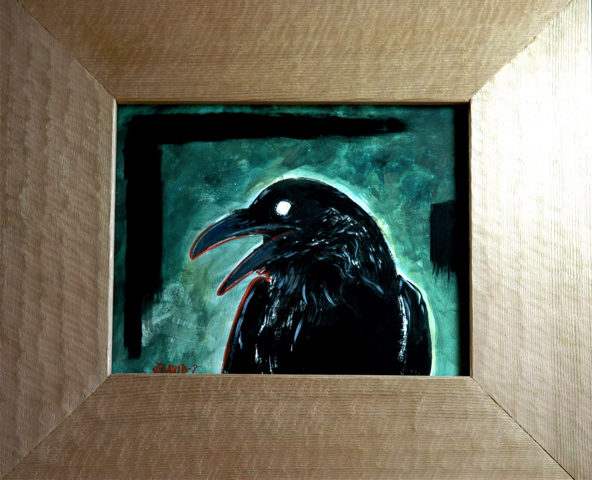 Old Blind RavenGouache, Board, Cedar Frame
Old Blind RavenGouache, Board, Cedar Frame- 14.25"h
- 16.38"w
- 1.25"d
SOLD -
 Conch Shell Necklace with Antique BeadsConch Shell, Antique BeadsSOLD
Conch Shell Necklace with Antique BeadsConch Shell, Antique BeadsSOLD -
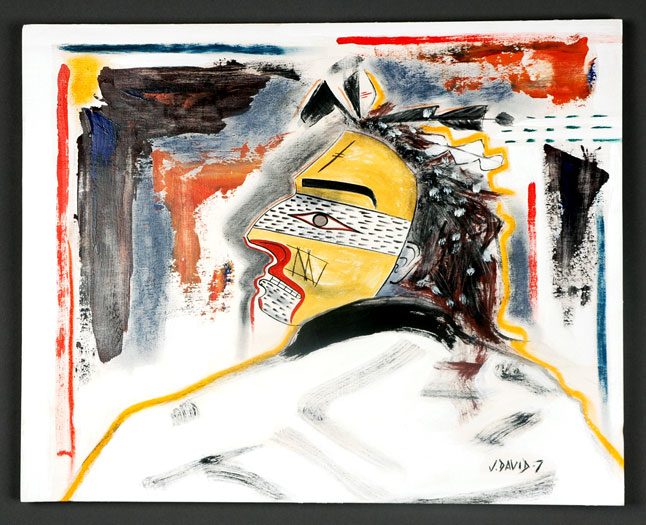 Welcome Dancer – Yellow MaskAcrylic on Board, Pencil
Welcome Dancer – Yellow MaskAcrylic on Board, Pencil- 16"h
- 20"w
- 1"d
SOLD -
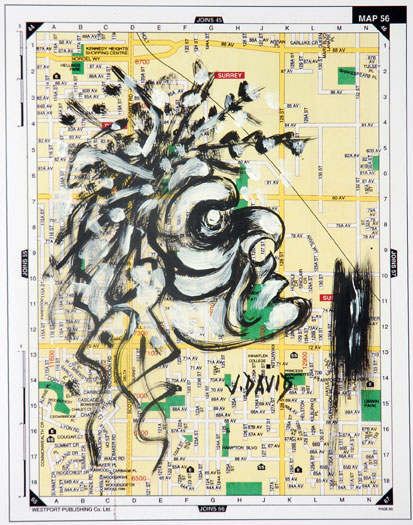 Wild Man of the Hood Brush Sketches – 1Ink, Acrylic, Photo Paper, Conservation Framing
Wild Man of the Hood Brush Sketches – 1Ink, Acrylic, Photo Paper, Conservation Framing- 15.88"h
- 13.5"w
SOLD -
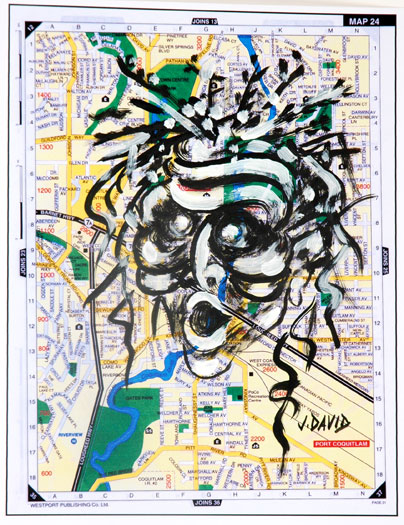 Wild Man of the Hood Brush Sketches – 2Ink, Acrylic, Photo Paper
Wild Man of the Hood Brush Sketches – 2Ink, Acrylic, Photo Paper- 11"h
- 8.5"w
SOLD -
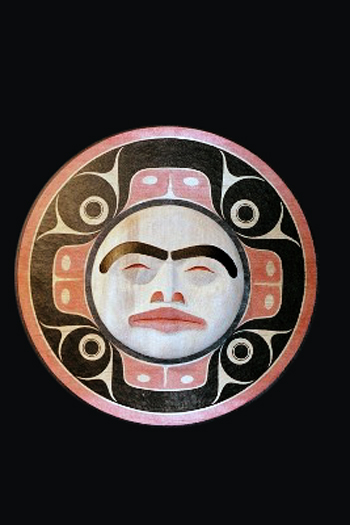 Untitled (Moon)Pastel on Paper, Conservation Framed
Untitled (Moon)Pastel on Paper, Conservation Framed- 34.5"h
- 26.5"w
SOLD -
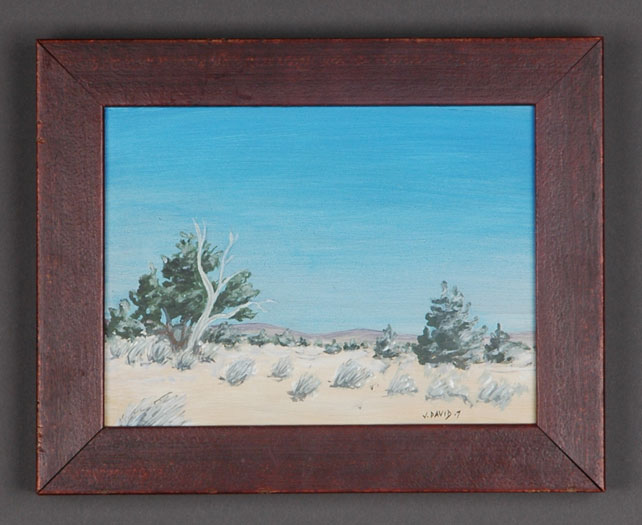 Navajo LandAcrylic on Board
Navajo LandAcrylic on Board- 8"h
- 10"w
SOLD -
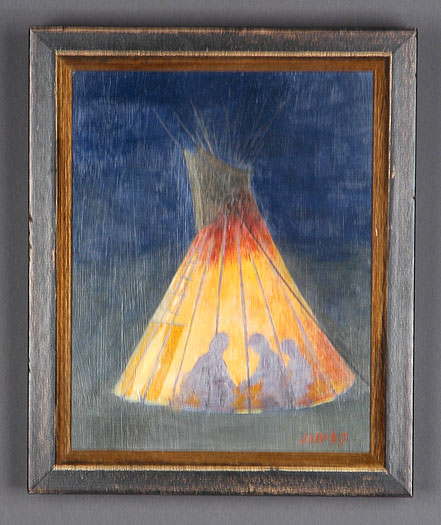 Night CeremonyAcrylic on Board
Night CeremonyAcrylic on Board- 12"h
- 9.5"w
SOLD -
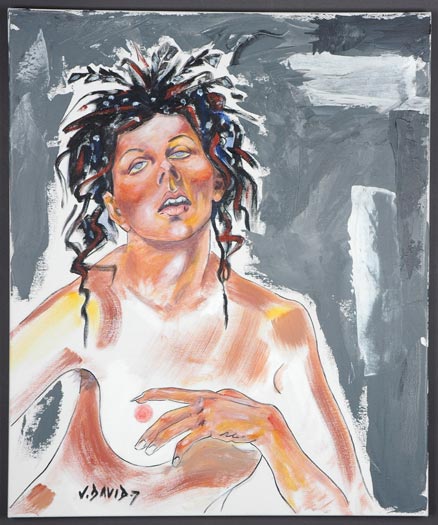 Wild Woman of the Hood #1Acrylic on Canvas
Wild Woman of the Hood #1Acrylic on Canvas- 24"h
- 20"w
SOLD -
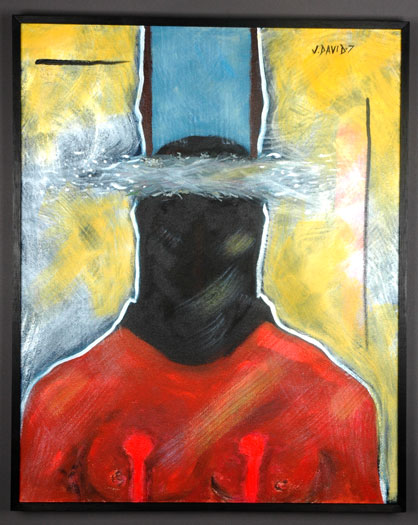 Arbor VisionAcrylic on Canvas
Arbor VisionAcrylic on Canvas- 30"h
- 24"w
SOLD -
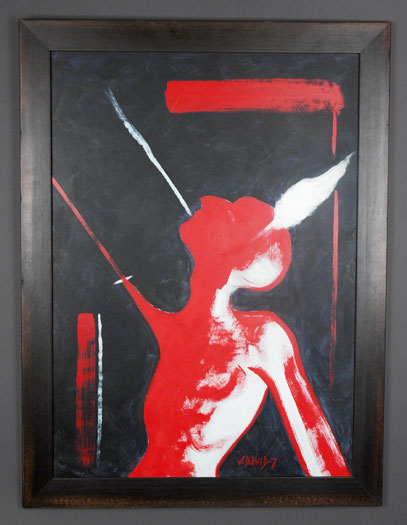 That the People May LiveAcrylic on Board
That the People May LiveAcrylic on Board- 31"h
- 24"w
SOLD -
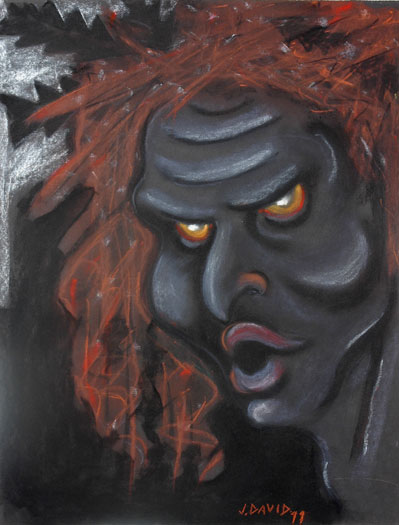 Ulth-ma-kokePastel on Paper
Ulth-ma-kokePastel on Paper- 25"h
- 19"w
SOLD -
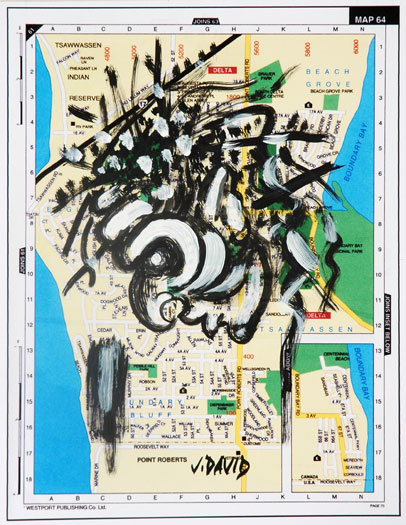 Wild Man of the Hood Brush Sketches – 3Ink, Acrylic, Photo Paper
Wild Man of the Hood Brush Sketches – 3Ink, Acrylic, Photo Paper- 11"h
- 8.5"w
SOLD -
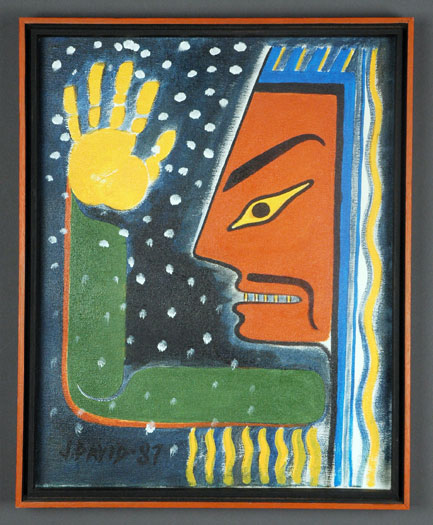 Welcome DancerAcrylic on Canvas
Welcome DancerAcrylic on Canvas- 21.25"h
- 17.25"w
- 1.75"d
SOLD -
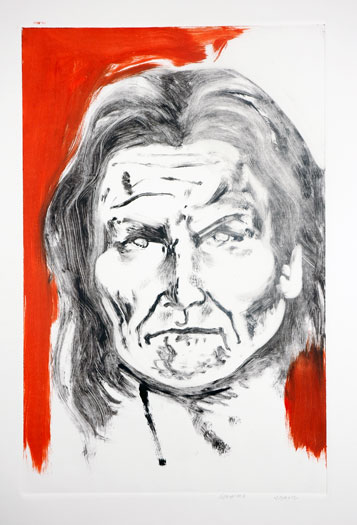 Geronimo – MonotypeMonotype
Geronimo – MonotypeMonotype- 30"h
- 22"w
SOLD -
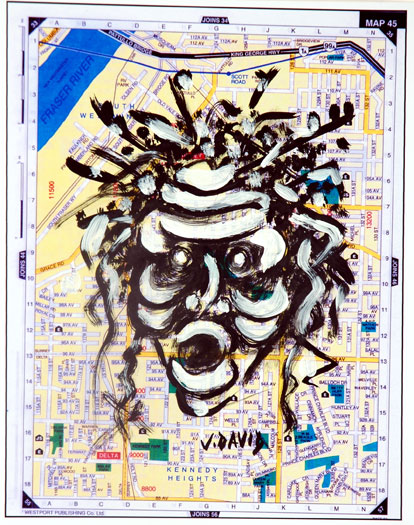 Wild Man of the Hood Brush Sketches – 4Ink, Acrylic, Photo Paper
Wild Man of the Hood Brush Sketches – 4Ink, Acrylic, Photo Paper- 11"h
- 8.5"w
SOLD -
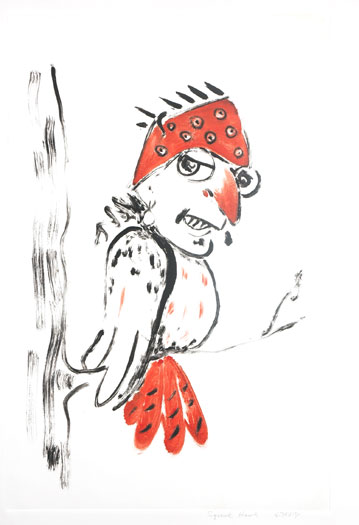 Squawk Hawk: Portrait of Rick BartowMonotype
Squawk Hawk: Portrait of Rick BartowMonotype- 30"h
- 22"w
SOLD -
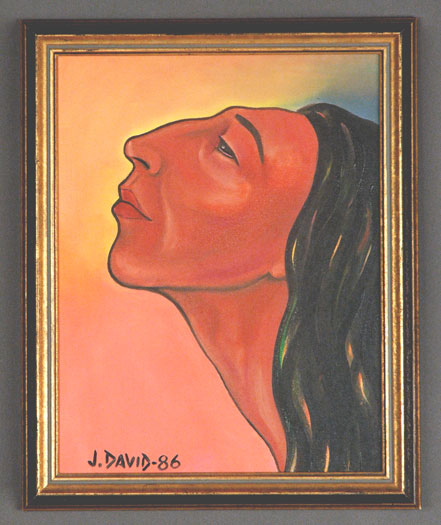 Art Nouveau MaidenOil on Canvas, Framed
Art Nouveau MaidenOil on Canvas, Framed- 16"h
- 13"w
- 1.75"d
SOLD -
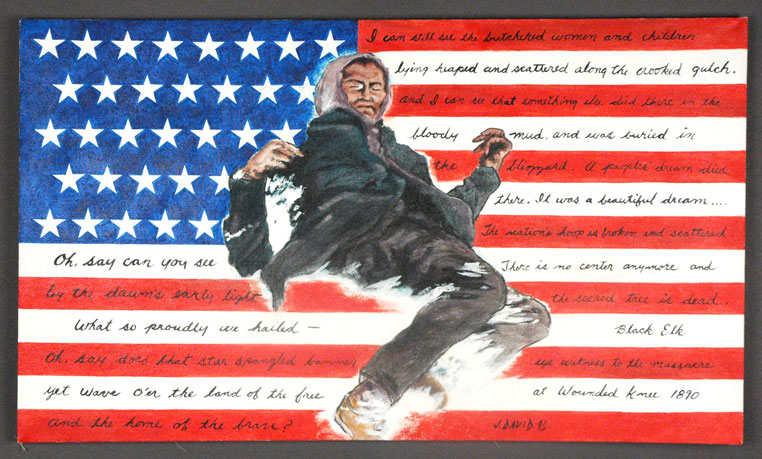 Big Foot, Wounded KneeAcrylic on Canvas
Big Foot, Wounded KneeAcrylic on Canvas- 20"h
- 34"w
- 1"d
SOLD -
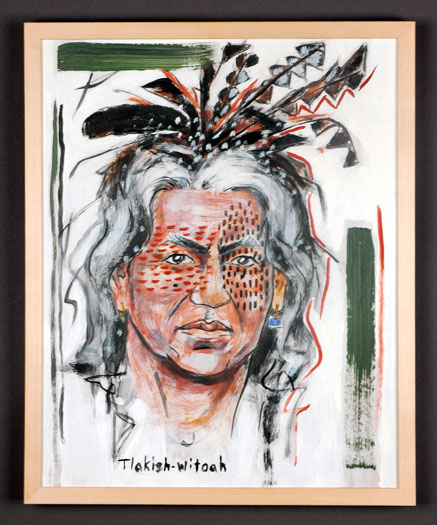 Tlakish-WitoahAcrylic on Board, Framed
Tlakish-WitoahAcrylic on Board, Framed- 20"h
- 16"w
- 1"d
SOLD -
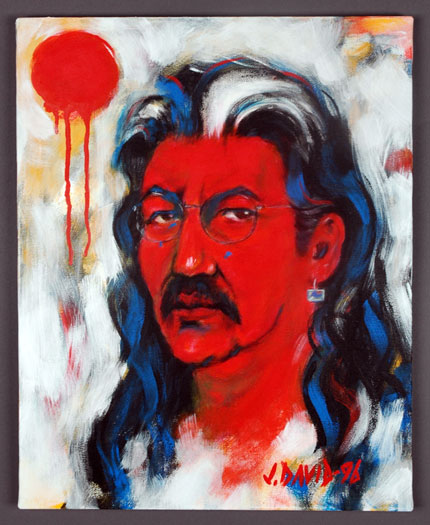 SundancerAcrylic on Canvas
SundancerAcrylic on Canvas- 20"h
- 16"w
- 1"d
SOLD -
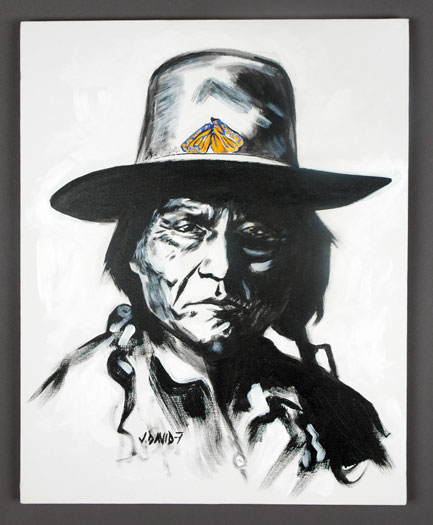 The Monarch ButterflyAcrylic on canvas
The Monarch ButterflyAcrylic on canvas- 20"h
- 16"w
- 1"d
SOLD -
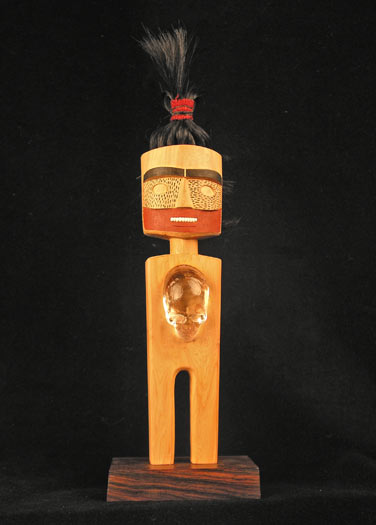 Shrine FigureYew & Iron Wood, Human Hair, Acrylic, Glass Beads, Hand Cast Crystal
Shrine FigureYew & Iron Wood, Human Hair, Acrylic, Glass Beads, Hand Cast Crystal- 12"h
- 4"w
- 2"d
SOLD -
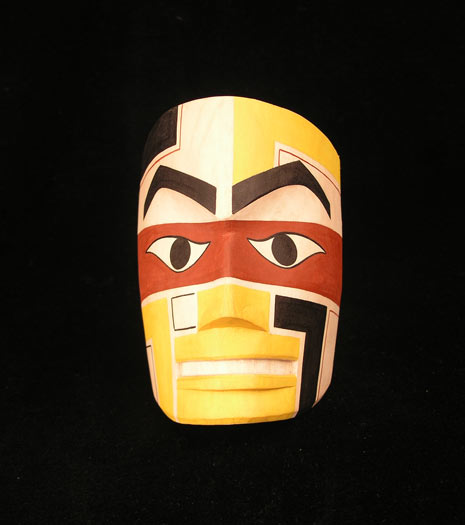 The ArtistAlder, Acrylic
The ArtistAlder, Acrylic- 5"h
- 3"w
- 3"d
SOLD -
 River Canoe BowlMaple
River Canoe BowlMaple- 12"h
- 5"w
- 4"d
SOLD -
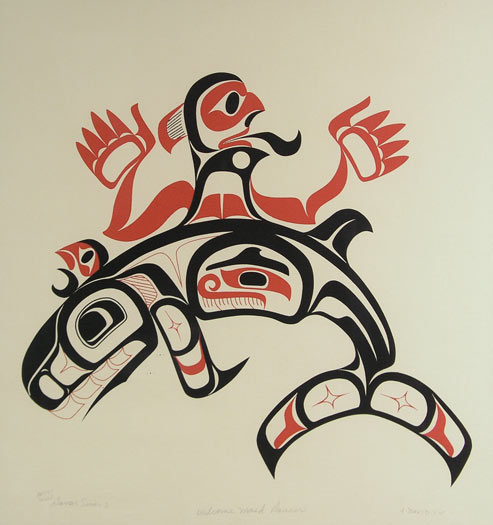 Welcome Mask Dancer Series I A/PSerigraph, Conservation Framed
Welcome Mask Dancer Series I A/PSerigraph, Conservation Framed- 21.75"h
- 17.75"w
SOLD -
 Serpent Dance Series II A/PSerigraph, Conservation Framed
Serpent Dance Series II A/PSerigraph, Conservation Framed- 21.75"h
- 17.75"w
SOLD -
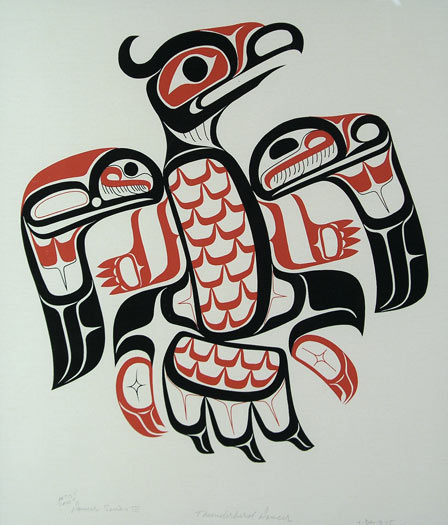 Thunderbird Dancer Series III A/PSerigraph, Conservation Framed
Thunderbird Dancer Series III A/PSerigraph, Conservation Framed- 21.75"h
- 17.75"w
SOLD -
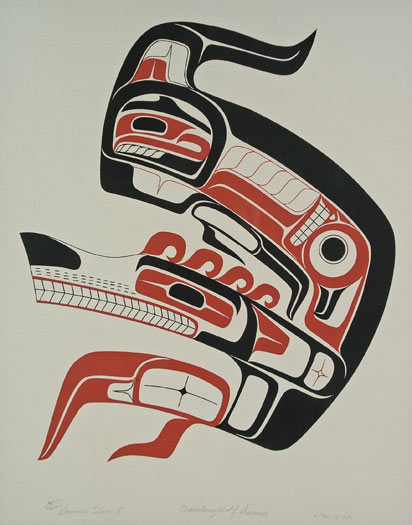 Crawling Wolf Dancer Series IV A/PSerigraph, Framed
Crawling Wolf Dancer Series IV A/PSerigraph, Framed- 21.75"h
- 17.75"w
SOLD -
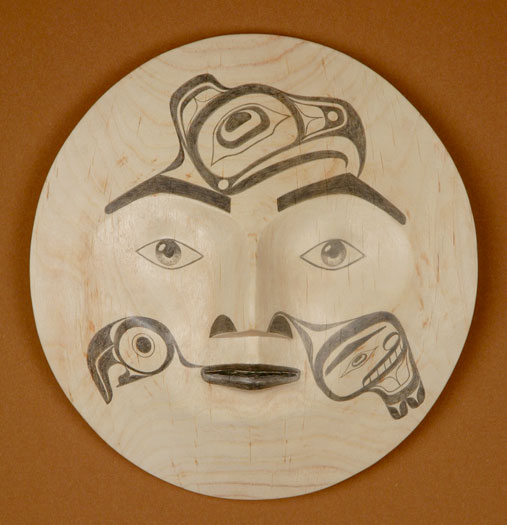 Sparrow Hawk MoonAlder, Pencil, Graphite
Sparrow Hawk MoonAlder, Pencil, Graphite- 8"h
- 8"w
- 2.25"d
SOLD -
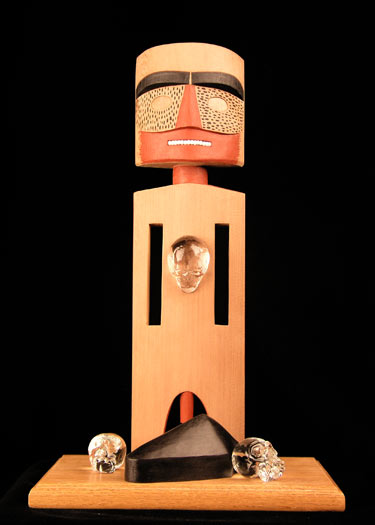 Whaler’s Shrine MaquetteRed Cedar, Handformed Crystal
Whaler’s Shrine MaquetteRed Cedar, Handformed Crystal- 15"h
- 10"w
- 6"d
SOLD -
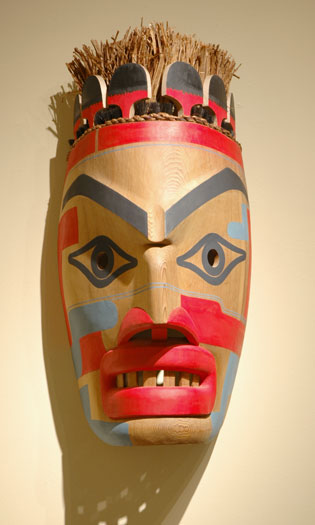 Chief of the WolvesRed Cedar, Cedar Bark, Acrylic, Horse Hair
Chief of the WolvesRed Cedar, Cedar Bark, Acrylic, Horse Hair- 26"h
- 11"w
- 12"d
SOLD -
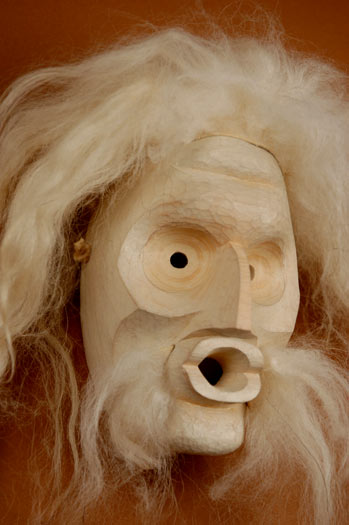 PookmisAlder, Afghan Goat Hair
PookmisAlder, Afghan Goat Hair- 10"h
- 9"w
- 4"d
SOLD -
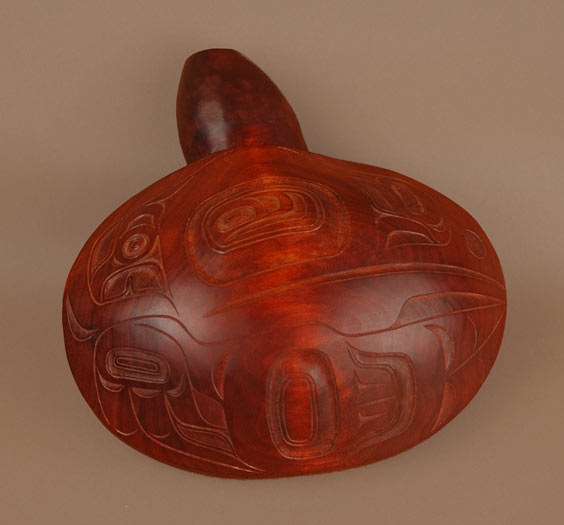 Raven and Clam ShellBass WoodSOLD
Raven and Clam ShellBass WoodSOLD -
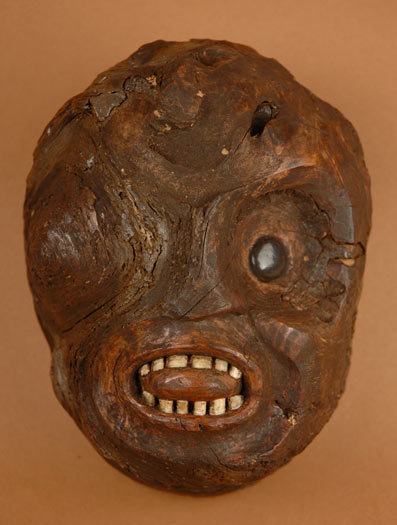 Wood Burl SpiritWood Burl, Bone, Beach Stone
Wood Burl SpiritWood Burl, Bone, Beach Stone- 5.5"h
- 5"w
- 4"d
SOLD -
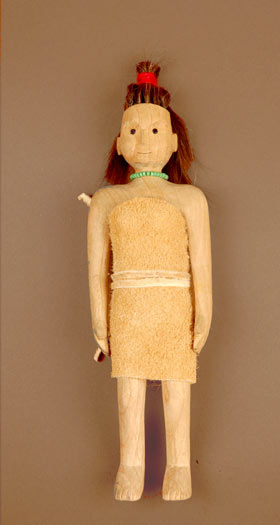 Nuu-chah-nulth GirlMaple, Leather, Human Hair, Glass Beads, Hemp String
Nuu-chah-nulth GirlMaple, Leather, Human Hair, Glass Beads, Hemp String- 8"h
- 2"w
- 1.5"d
SOLD -
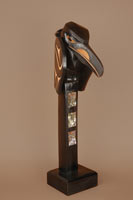 The Old Man WaitsCedar, Abalone, Acrylic
The Old Man WaitsCedar, Abalone, Acrylic- 16"h
- 3.75"w
- 3.5"d
SOLD -
Ulth-MakokeRed Cedar, Muskox Fur, Bison Fur, Cedar Bark, Pigments
- 17"h
- 9"w
- 8"d
SOLD -
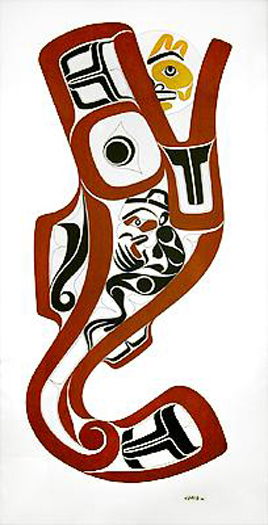 Cold & Lunar Eclipse Banner
Cold & Lunar Eclipse Banner- 53"h
- 9"w
SOLD -
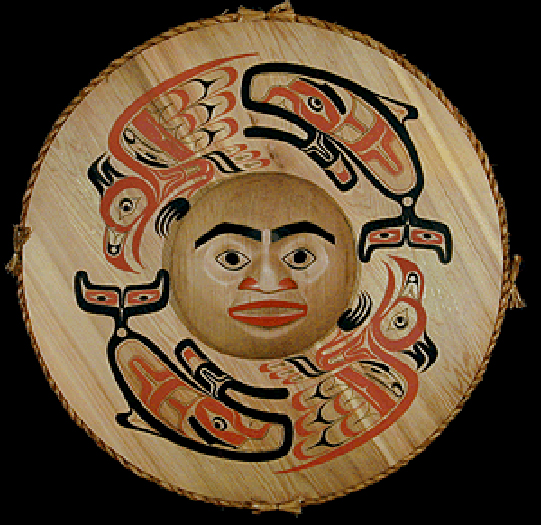 Whaler’s MoonCedar, Pigments
Whaler’s MoonCedar, Pigments- 37"h
- 37"w
- 30"d
SOLD -
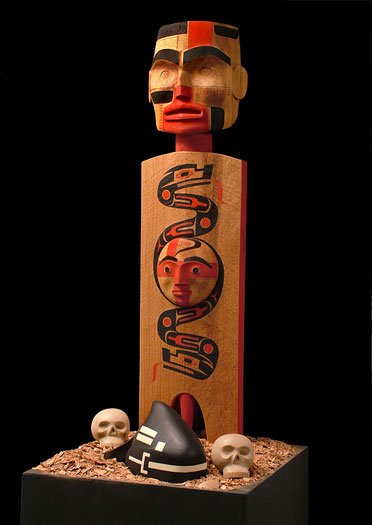 A Whaler’s ShrineCedar, Pigments
A Whaler’s ShrineCedar, Pigments- 79"h
- 20"w
- 9.5"d
SOLD -
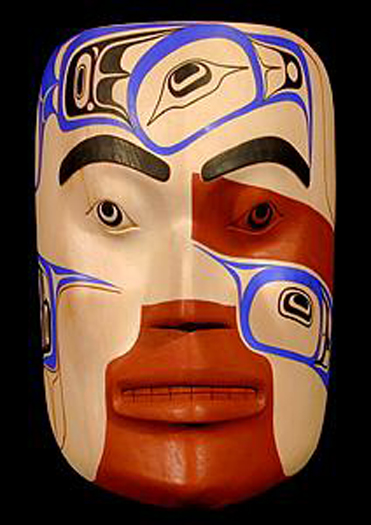 Trance MaskCedarSOLD
Trance MaskCedarSOLD -
 PremonitionsHide, Acrylic, Cedar, Antler handle
PremonitionsHide, Acrylic, Cedar, Antler handle- 17"h
- 17"w
- 3"d
SOLD
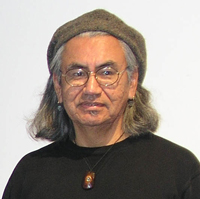
Joe David is of Nuu-chah-nulth heritage, and part of his childhood was spent in the Clayoquot village of Opitsat on the West Coast of Vancouver Island. The culture and mythos of the Nuu-chah-nulth connects deeply to the waters: the whaling journeys which are central to the rhythms of life; the mythic characters who swim, float and appear in the fog over the waves. Parts of Joe David’s work embody the rarified air of the Nuu-chah-nulth culture, bringing the artforms and legends straight to the modern world.
Yet, other aspects of David’s art are wholly characteristic of the contemporary: having spent portions of his childhood in Seattle, the artist effortlessly walks the line between island and city. His work encompasses both sides of the spectrum in exciting dichotomy. David utilizes various media, ranging from acrylic paintings to serigraphs to wood carving to hot-sculpted glass. This ability to straddle and synthesize ancient traditions with contemporary media is a hallmark of David’s deeply important art, and brings it to the forefront of the form.
After attending art school in the late sixties and then working as a commercial artist, David’s interests turned more specifically to Northwest Coast Native art. His friendship with Bill Holm and Duane Pasco led all three into new explorations of the art of Southern Northwest Coast along with their work in the Northern formline style. Working with his cousin, Ron Hamilton, Joe experimented with serigraphs featuring traditional West Coast design motifs in–what was for the time–a new and innovative medium.
David has recently begun to incorporate glass into his repertoire—a material that ties the burgeoning Northwest medium to the ancient artforms of the region. He has developed ties to the famed Pilchuck Glass School in Stanwood, WA, introduced to that medium by noted native glassblower Preston Singletary.
Joe David has been instrumental in the resurgence of Nuu-chah-nulth art and ceremony. His art reflects a deep commitment to spirituality and cultural heritage. The character of Bukwus—a primeval wild man who lurks in all humanity—often makes appearances in his work, reminding us that whether ancient or modern, we are connected by the same deep currents, the same spirit.
“When I was in my late twenties I realized how important it was that I move back home to my birthplace and birthright, and more importantly the birthplace of my family’s and people’s culture and art. Because I believed that there and only there was the true life source. And I believed this for myself and for no other. Other artists can believe and speak for themselves.
And, for me, it proved true. I not only found my art’s power, I found my personal power. And I would have gladly spent the rest of my days there amongst my people and our homerights.
But it wasn’t meant to be, as I was invited away and sent away by the ancients and the future. Heavy hearted, but resolute to answer my calling, I have now for over twenty years been adrift in tides of change and evolution spiritually culturally and artistically, and in the hot and cold face of mystery, holding faith that my guide be true.
I recently returned home for a carvers gathering to find in my absence all is relatively well. But soon maybe it’ll be time to return, and take my place this time as an elder and teacher.”

